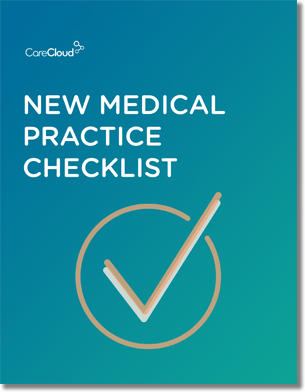Seven in the morning. Instinctively, you bang on your alarm clock, fumbling for the snooze button. You may turn on a lamp or turn off your ceiling fan, pop a breakfast Hot Pocket in the microwave and maybe switch on your Apple TV and mirror your iTunes on it for morning mood music. While that makes you sound tech-savvy already, imagine the benefits of programming these functions to perform on their own.
It goes beyond an extra 15 minutes of sleep. Modern homes in industrialized nations are wired for a number of automated functions, most of them requiring few instructions and minimal electricity. With the rise of domotics, a fully automated home of Jetsons lore is becoming increasingly realistic and affordable.
Like homes, EHRs contain a number of different corridors and various routes you can take to reach similar solutions and/or destinations. Still, despite how easily EHR systems accommodate to a variety of work styles, there exists a large amount of physician resentment. Does automating EHR tasks help assuage their pessimism?
Namely, EHR technology needs to address the amount of tedium attached to it. Physicians have quickly realized that EHRs require a sizeable amount of data entry – much like maintaining a good home does. Automated features in homes have provided shortcuts to avoid tedium – for instance, getting up in the morning without some of the features we’ve come to rely on would’ve taken much longer than it did in my first paragraph.
Likewise, hospitals and other health organizations are beginning to consider automation as a way to get around the repetitive nature of EHRs. But to do so, you need to ensure all aspects of patient engagement – all elements and persons involved with the actual patient-physician consultation, the applications attached to the electronic health record system and its integration with medical billing – are communicating with each other.
If $85 billion was spent on home networking in the U.S. last year to create thermostats that automatically turn on the A/C before you get home, then EHRs can benefit from automation technology to relieve physicians and other healthcare providers of stressors.
Some companies have taken the initiative to help doctors free up this kind of brain space. For instance, a Tennessee-based national retail clinic chain implemented self-registration kiosks after finding clinicians were spending exorbitant amounts of time entering patient data manually.
Like a family home, potentially compromising patient information lives within an EHR, so system failures are a rather concerning possibility. If the lights go out in a smart home, you can automate a generator, allowing you to keep your devices communicating.
How do you prepare for an EHR system failure? South County Hospital in Rhode Island used automation technology to develop a ‘downtime’ process, allowing record transition to PCs connected to a dedicated server in cases where instant access to pertinent health information is necessary.
Then there’s automated integration of various services. Just as X10 or ZigBee technology align smart home products under one umbrella and controller – say cameras, motion sensors, audio systems and light dimmers – EHRs can integrate patient and practice management with revenue cycle optimization to create a fully integrated bundle fit for hospital and practice workflows.
This integration improves quality of care, raises productivity and helps practices and hospitals easily adhere to a number of compliance guidelines. It also helps healthcare providers make more money without having to desperately raise the amount of patients they see yearly.
Another popular feature of smart homes are voice commands, which will become increasingly more frequent in EHRs as natural language processing and note dictation become more intelligent and precise.
And while EHRs are often integrated with lab orders, ePrescriptions and other providers, they could automate population health management tasks to become more effective. This is perhaps where automation technology is most helpful, namely because it will help physicians strengthen their relationships with patients by combining an electronic registry with an automated method of communicating with patients in need of preventive or chronic care services.
Like smart homes, EHRs aren’t cheap. But they represent a fusion between ergonomics and technology whose origins lie in the Cold War era – which boasted the early days of the Internet, the development of the MUMPS language, the 1964 New York World’s Fair and the Monsanto House of the Future in Disneyland – when humans learned innovation was less about inventing from scratch than building upon existing technology to address needs.
What kind of automated tasks can your EHR handle?

Do you know what you need when setting up a new medical practice?

